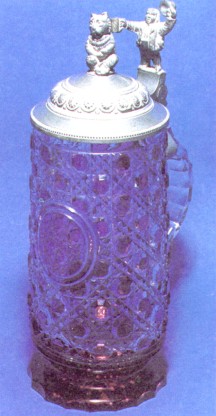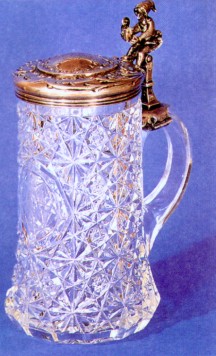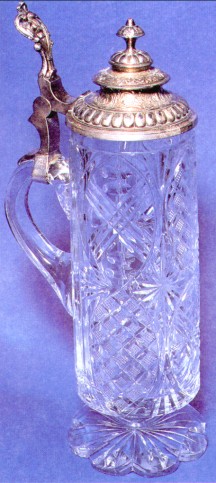 |
| ˝-liter blown and cut glass stein, cranberry
over clear, Hob and Lace pattern. Note the cut along the handle. |
 |
| ˝-liter blown and cut glass stein, clear,
silver lid, Persian pattern. |
 |
| ˝-liter blown and cut glass stein, clear, multiple
patterns. |
geometric sparkling miter cuts into a typically thick wall of glass. Miter
cutting describes the deep narrow high angle inclusions made into the glass with
sharp stone wheels called miter wheels. The high surface luster overall on this
stein is evidence of careful hand polishing on a series of wooden wheels and
fiber brushes. Soft woods such as willow or poplar were used with abrasives such
as pumice to remove a gray-white color from the cut surface and return it to the
soft clear luster. This early 1880's practice was eventually supplanted in the
industry by easier acid polishing, which never looked as good, unless followed
with additional hand polishing to remove the watery appearance left by the acid.
Dorflinger was one of the few producers of American Brilliant colored cut glass,
which took particular skill to make and is expensive and highly prized today.
The glass was made by placing a layer of colored glass over a clear layer. The
pattern was then cut from the colored layer through and into the clear glass.




